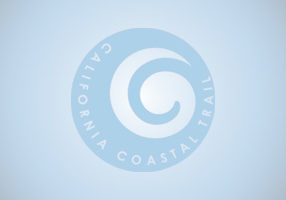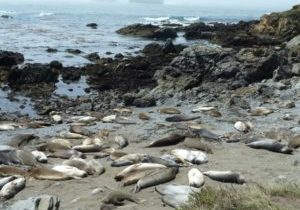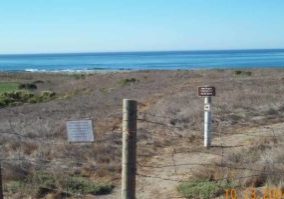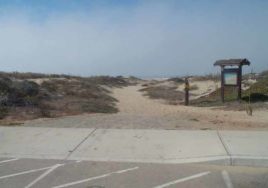San Luis Obispo County
The treasures of this rural county's spectacular, diverse shoreline remain largely undiscovered by the outside world. This mountain-rimmed, largely agricultural coast is characterized by two large crescent bays, Estero Bay and San Luis Obispo Bay, a pristine smaller bay, San Simeon, and Morro Bay, an inner bay that's really an estuary. Between the outer bays, eleven named points, four of them major, punctuate the shore. Three other major features contribute to the distinctive rural character of this coast: the 77,000-acre Hearst Ranch in the north, Pacific Gas & Electric's (PG&E's) large Diablo Canyon/Pecho coast property in the center, and the vast Nipomo Dunes in the south.
The Coastal Trail takes 102 miles (including the final 3½ miles of the previous chapter) to traverse San Luis Obispo County's 96-mile shoreline. In the far north, the CCT follows twisting Highway 1 above the steep, rocky coast of southern Big Sur. The coastal landscape changes dramatically at San Carpoforo Canyon, where the Hearst Ranch begins. To the south a rolling marine terrace wedges between the Santa Lucia Range and the shore. The gentle landscape looks inviting, but coastal access on the Hearst Ranch is limited and obscure, currently allowed as a "revocable right to pass." We describe access to and along the coast there via trails used by coast lovers over many years, doing so with the stipulation that such access is revocable at any time. If you visit the wild, remote Hearst Ranch coast, please respect the land by staying on described paths and not camping, not building fires and not smoking.
Where the Hearst Ranch ends south of San Simeon, CCT follows the shore to the pleasant town of Cambria. Then private land forces the Coastal Trail along Highway 1 almost to Cayucos. West of that friendly little town, the Estero Bay acquisition has recently preserved the coast. At Cayucos, the CCT gains a long beach at the base of steep hills, following it to landmark Morro Rock. CCT traverses the harbor district of Morro Bay, another amiable town. A boat shuttle takes CCT across Morro Bay to the sand spit forming its west shore, CCT's first boat ride since Marin. Then CCT follows the dramatic shore of Montaña de Oro State Park for ten miles, first along the bird-rich sand spit, then below rising bluffs, through a dunes and finally along a spectacular convoluted rocky shore backed by the San Luis Range. The CCT currently doubles back on a 20 mile road detour to continue down the coast when it reaches Montaña de Oro's southern boundary and the locked north gate of PG&E's Pecho coast property. They own the next 13 miles of shoreline, with their Diablo Canyon nuclear power plant smack in the middle of it. To their credit, PG&E has opened 3¾ miles of superb trail at their property's south end to free guided hikes requiring advance reservations. We urge them to eventually provide access to the entire Pecho coast.
South of the Pecho Coast, the Coastal Trail follows the shores of San Luis Bay into Santa Barbara County. It mostly follows a residential shore until the vast sweep of Pismo Beach, the most popular beach since Carmel. Pismo Beach rapidly leads into the vast dune complex occupying the southern San Luis Obispo coast. Sadly the beach south of Pismo is open to motor vehicles for 5¼ miles, a foolish use of the delicate ecosystem. From Oso Flaco Dunes south, walkers regain exclusive use of the sandy shore. Hikers who visit that remote beach usually have little company other than shore birds, pounding waves and drifting sand.
Explore the Trail
Click a section to discover more detailed information on pieces of the trail that can be explored within a day. Find highlights of what each area has to offer as well as other resources.




